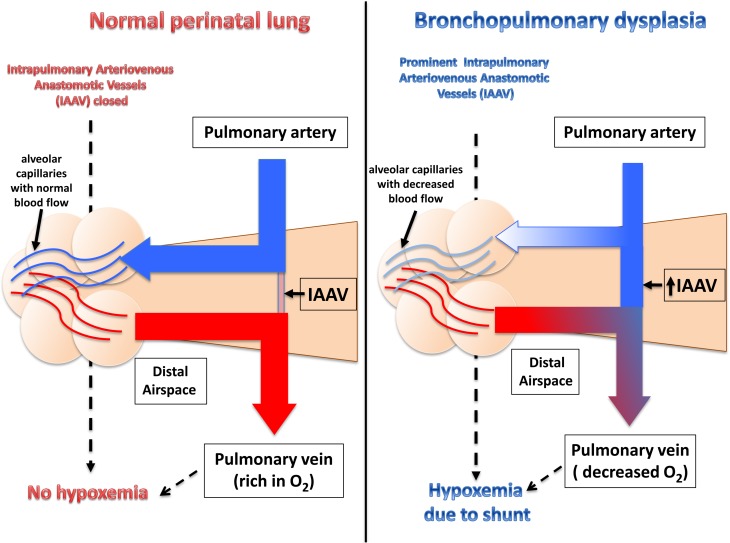Figure 4.
Schematic of blood flow redistribution via functional intrapulmonary arteriovenous anastomotic vessels (IAAV) in severe bronchopulmonary dysplasia (BPD) lung. In normal perinatal lung, pulmonary and bronchial arteries are the major contributor of the blood influx. Although present in the normal lung (13, 14), IAAV are generally not prominent or active. Thus, incoming blood flow is likely directed toward the distal lung parenchyma where the blood reaches the alveolar capillaries. In contrast, in the BPD lung precapillary IAAV are open and directly connect the pulmonary arterial and the venous circulation. Therefore, much of the incoming blood can bypass the distal lung without participation in gas exchange, resulting in significant shunt and hypoxemia.

